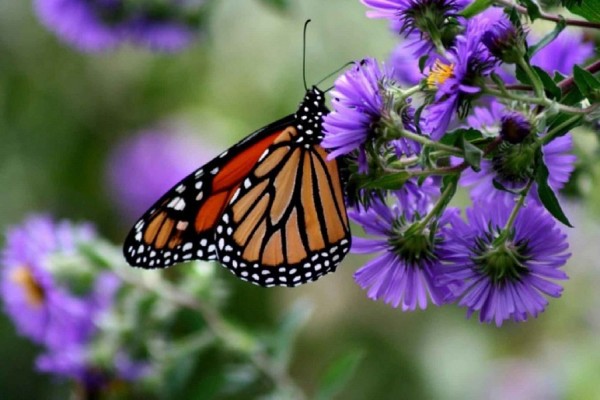By Ana Verayo, | March 01, 2016

Monarch butterfly populations are now making a rebound in Mexico.
Good news for monarch butterfly populations as a new wildlife report revealed that the butterflies have increased their populations over wintering grounds located in the forests of Mexico this year. Biologists also believe that this is a positive sign after declines a few years back.
Like Us on Facebook
Today, the population of the iconic orange and black butterflies are now three and half times greater than last winter which also covers almost 10 acres of forest, according to data collected by the World Wildlife Fund Mexico. Biologists determine butterfly populations by clusters in acres instead of individuals, as they gather densely in pines and firs.
This news gives hope to biologists and environmentalists however, scientists still caution about the future of these monarchs as it is still uncertain. The numbers still have not yet reached high population rates 20 years ago, when winter populations spanned as much as 44 acres.
These butterflies complete a yearly migration of a distance spanning 1,200 to 2,800 miles beginning from the United States and Canada however, they suffered due to a decline of milkweed plants which are plants that the creatures feed upon and lay their eggs on. Milkweed are being damaged and destroyed by pesticide use and farming and land development.
According to senior scientist Sylvia Fallon from the Natural Resources Defense Council, the widespread use of increasingly deadly pesticides is preventing monarchs to survive. In order to help these beautiful creatures, scaling back the use of pervasive pesticides and planting more milkweed can keep these butterflies alive and thriving.
According to Director General for WWF-Mexico, Omar Vidal, more than ever, Mexico, United States and Canada should be able to increase conservation efforts to protect and restore their habitats especially along their migratory route.
The U.S. Fish and Wildlife Service announced last winter that they are joining forces with two conservation groups to carry out projects that will provide protection and restoration of monarch habitats. According to director Dan Ashe of the U.S. Fish and Wildlife Service, we can save the monarch butterfly in North America if we act quickly together.
Now, this initiative resulted in planting milkweed on more than 200,000 acres of land across the I-35 corridor from Texas to Minnesota, providing essential spring and summer breeding habitats along the main migration route of the butterflies, which costs US $2 million.
-
Use of Coronavirus Pandemic Drones Raises Privacy Concerns: Drones Spread Fear, Local Officials Say

-
Coronavirus Hampers The Delivery Of Lockheed Martin F-35 Stealth Fighters For 2020

-
Instagram Speeds Up Plans to Add Account Memorialization Feature Due to COVID-19 Deaths

-
NASA: Perseverance Plans to Bring 'Mars Rock' to Earth in 2031

-
600 Dead And 3,000 In The Hospital as Iranians Believed Drinking High-Concentrations of Alcohol Can Cure The Coronavirus

-
600 Dead And 3,000 In The Hospital as Iranians Believed Drinking High-Concentrations of Alcohol Can Cure The Coronavirus

-
COVID-19: Doctors, Nurses Use Virtual Reality to Learn New Skills in Treating Coronavirus Patients







